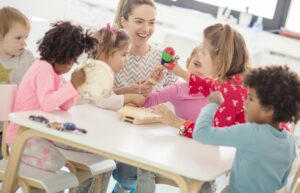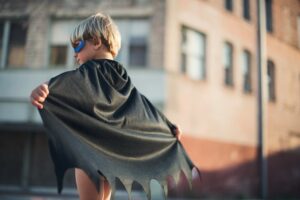Discovering Your Child’s Superpowers: An Encouraging Outlook On Being Different
By Nisi Cohen, Speech and Language Therapist at Bellavista School
Do you have a child who doesn’t quite fit the mould? You may sometimes find yourself wishing they could ‘just fit in’. But, what if I told you that their unique style of neurological processing could be a gift rather than a flaw? Enter Neurodiversity: a concept that challenges the traditional idea of ‘normal’ and actually celebrates brain variations.
The term Neurodiversity was originally coined by Judy Singer in the nineties and has evolved into a popular movement, advocating for people with autism, ADHD, dyslexia and other learning differences. While these conditions were traditionally viewed as disabilities, the neurodiversity movement recognises them as a natural and valuable part of human diversity. The stigma of being different is being challenged and children all over the world can collectively breathe a sigh of relief.
For a moment, just imagine standing in a garden, looking around and shrugging In disappointment as you see hundreds of the same plant, of the exact same colour and shade. Uniformity. Dullness. Not exactly beautiful imagery, is it? A garden needs a variety of different plants to make it a garden. Similarly, society needs a variety of people with different ways of thinking and seeing the world. Neurodiverse individuals are like the distinctive flowers in a garden, adding colour and diversity to the world around us.
As a Speech-Language Therapist based at a remedial school, my intervention guides learners in building the skills necessary for communication, academic achievement and social integration. However, as I learnt to reframe how I view learning disorders, I discovered that the key to making a positive impact lies in recognising and building on strengths, not just addressing difficulties. Therapists and teachers at the school strive to embrace the quirks and unique perspectives of the children and encourage them to explore their passions and talents. I have had the privilege of working with many funny, insightful, creative and talented children over the years.
Let’s explore some characteristics found in Neurodivergent (ND) people. They often include: greater intuition, multi-dimensional perception, vivid imagination, insightfulness, creativity and deep curiosity. These traits are becoming more valuable and sought-after in our fast-paced, high-tech world. Additionally, ND individuals often have a deep curiosity and intense interest in specific topics, leading to expertise in a particular area. Everyone knows of icons such as Albert Einstein, Steven Spielberg, Sir Winston Churchill and Walt Disney; they didn’t fit the mould, they struggled in school and yet each one excelled in their respective fields – physics, politics, film and art.
Environmental crises and economic instability are just two examples of what the planet is currently facing. Future generations will increasingly be required to think outside the box, predict trends, notice patterns, innovate, problem-solve and view the world from different perspectives. Having ND members of society will not only be an advantage, but a necessity.
It is encouraging and inspiring to discover all the gifts that come with a learning difficulty or brain difference. However, let’s not ignore the very real challenges that present themselves. These children are often misunderstood, have low self-esteem, experience academic struggles and are exhausted from trying to ‘fit in’. Fortunately, with the right support and accommodations, ND individuals can learn to love being different, figure out what their superpowers are, and thrive.
Here are some ways to provide support:
· Understand how your child’s brain works, their communication style, and their support needs. Read up about their specific conditions, speak to their therapists and become more informed.
· Create a sensory-friendly environment. Minimise distractions and allow for calming sensory inputs (such as sensory cushions, fidget toys or weighted pillows on their lap). This can help ND children feel more comfortable and focused.
· Encourage ‘brain breaks’, especially those involving movement and fresh air.
· Allow opportunities to recover in a safe space when they experience sensory overload. They are not trying to be difficult when they have a meltdown, they are experiencing a very real nervous system reaction.
· Create a sense of community and belonging for them. Help them feel valued and supported, rather than isolated and ostracised.
· Embrace and celebrate their differences. Find joy in the unexpected and quirky moments that arise.
· Encourage creativity and innovation by providing opportunities for self-expression and creative exploration. Unlock their superpowers. For more information, visit www.bellavista.org.za
References
Armstrong, T. (2010). Neurodiversity in the Classroom: Strength-Based Strategies to Help Students with Special Needs Succeed in School and Life. ASCD.
Armstrong, T. (2010). Neurodiversity: Discovering the Extraordinary Gifts of Autism, ADHD, Dyslexia, and Other Brain Differences. Da Capo Press.
Davis, R. D. (2010). The gift of dyslexia: Why some of the brightest people can’t read and how they can learn (Revised and Expanded ed.). Penguin Books.
den Houting, J. (2019). Neurodiversity: An insider’s perspective. Autism, 23(2), 271-273. https://doi.org/10.1177/1362361318820762.
Gobbo, K. (2010). The Art of Empowerment: Stories and Strategies for Learning Disabilities. Pro-Ed.
Grandin, T. (2013). The Gift of Neurodiversity. The Future of Children, 23(1), 13-29.
Greene, R. (2017). Raising human beings: Creating a collaborative partnership with your child. Scribner
Singer, J. (2017). Neurodiversity: The birth of an idea. Judy Singer.




